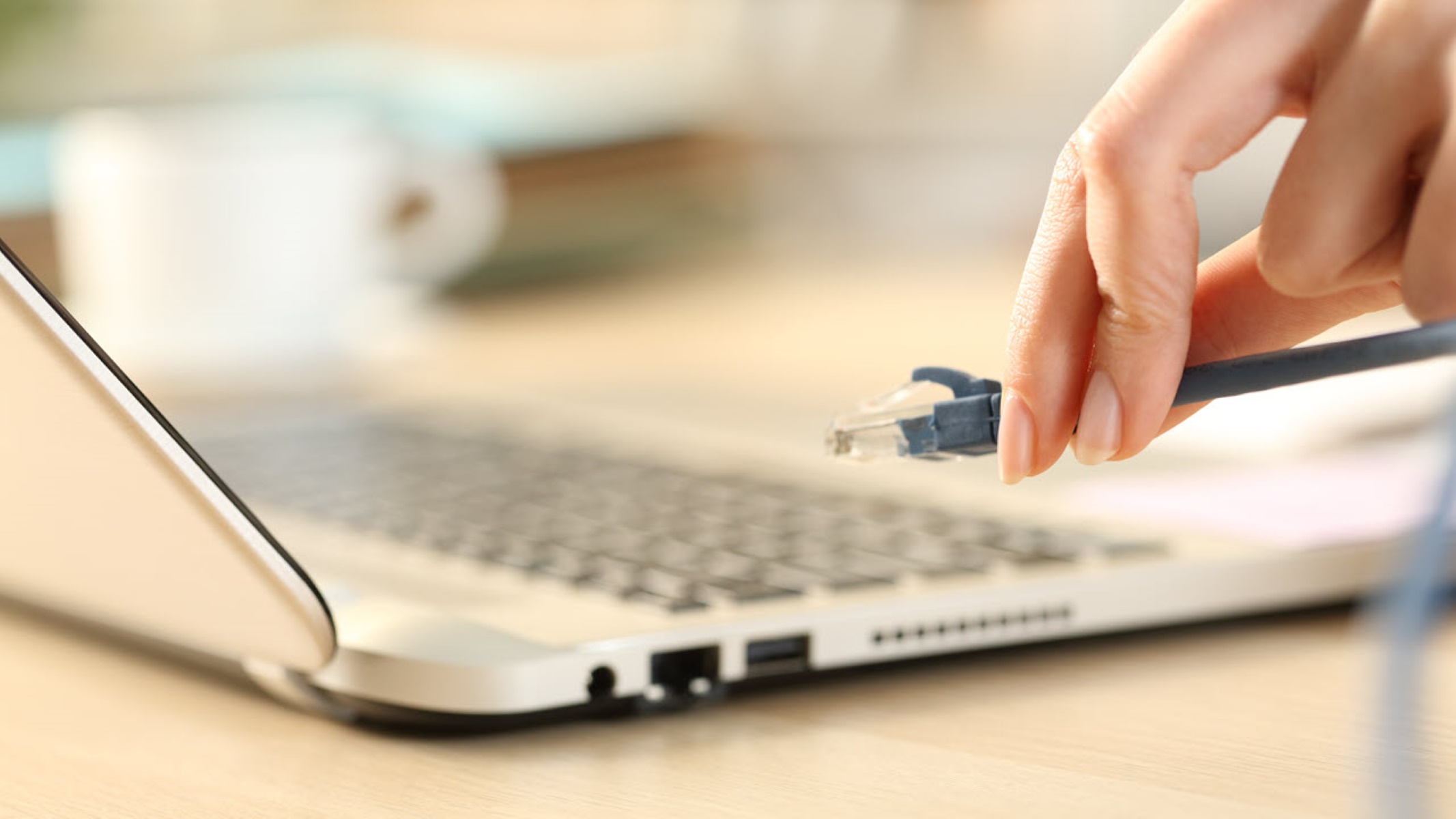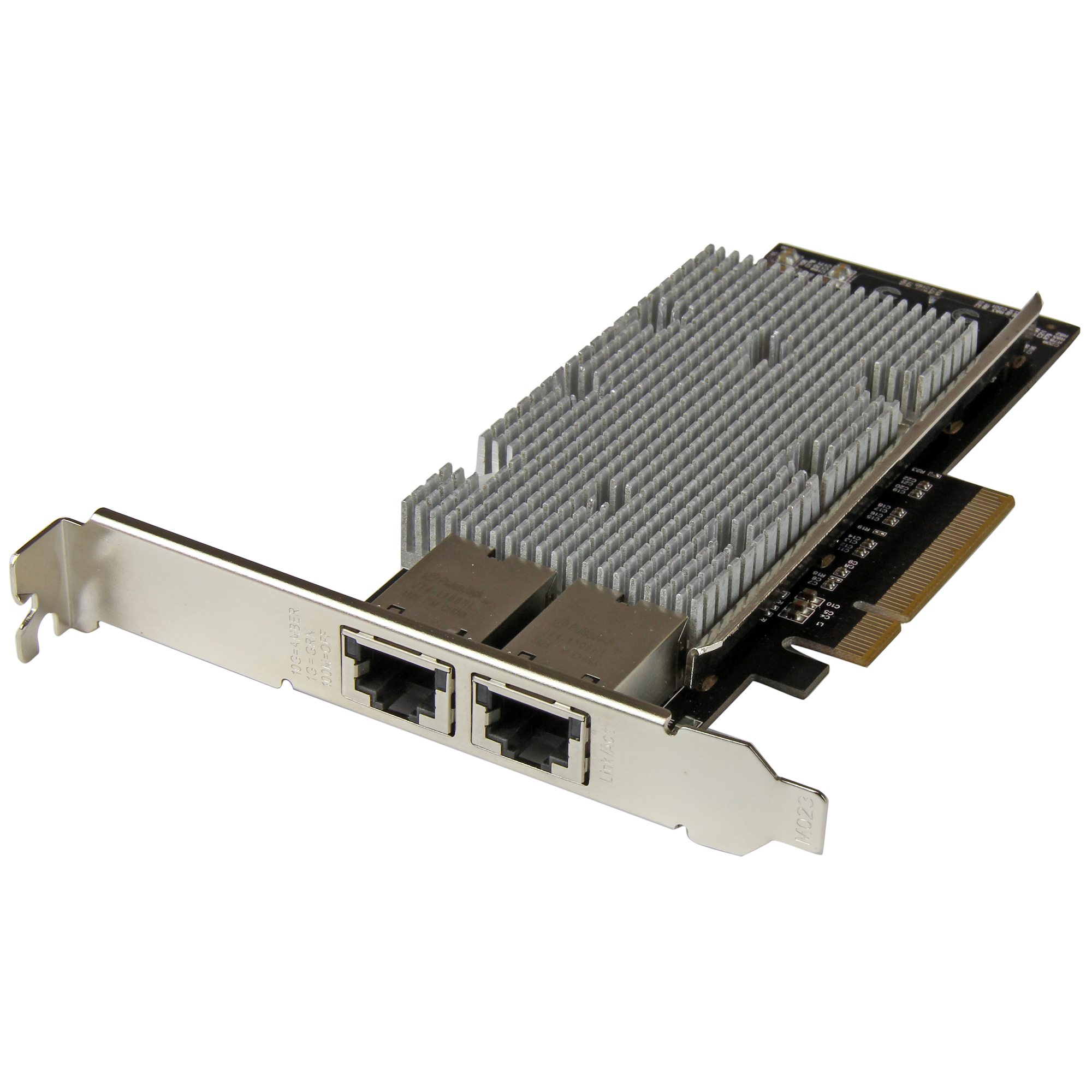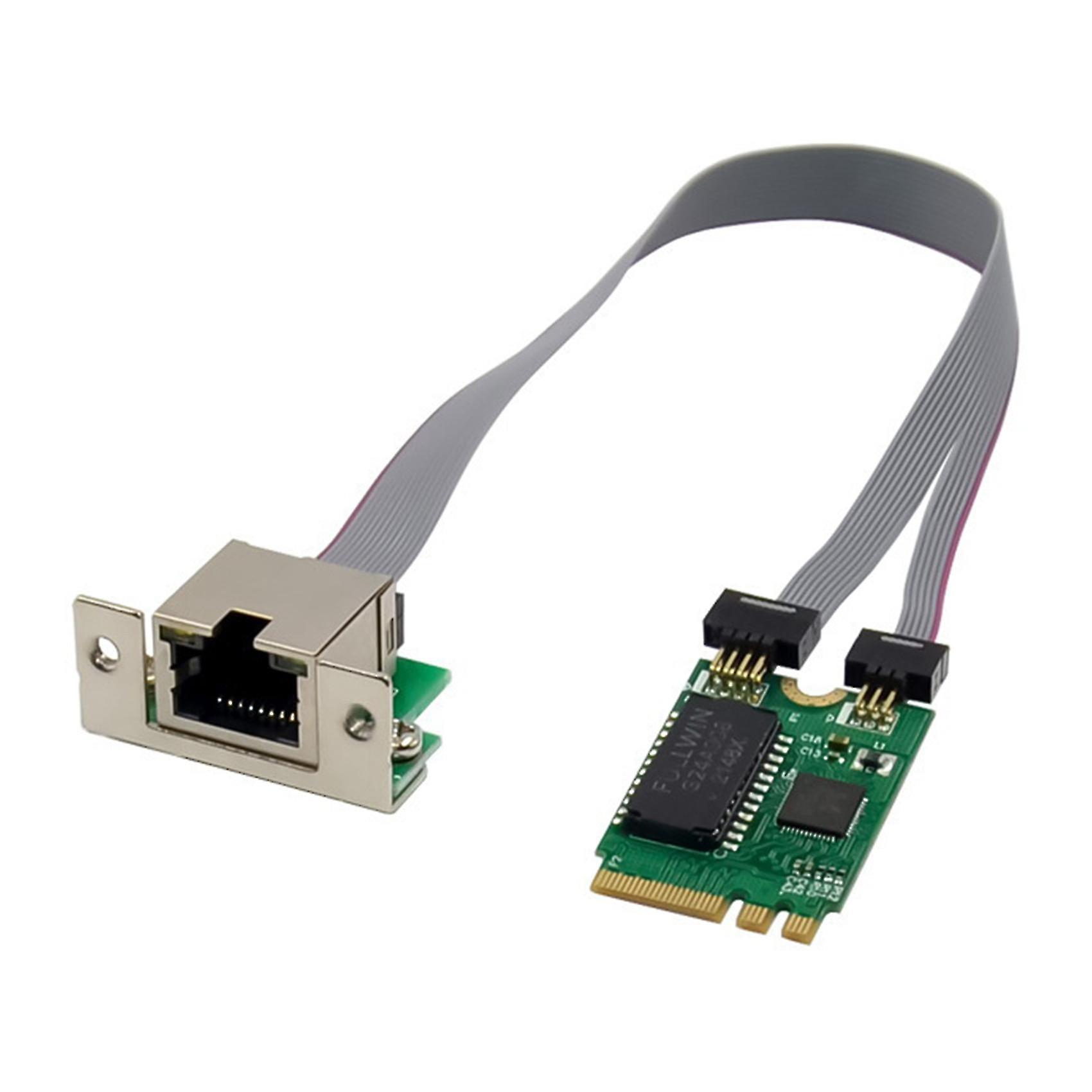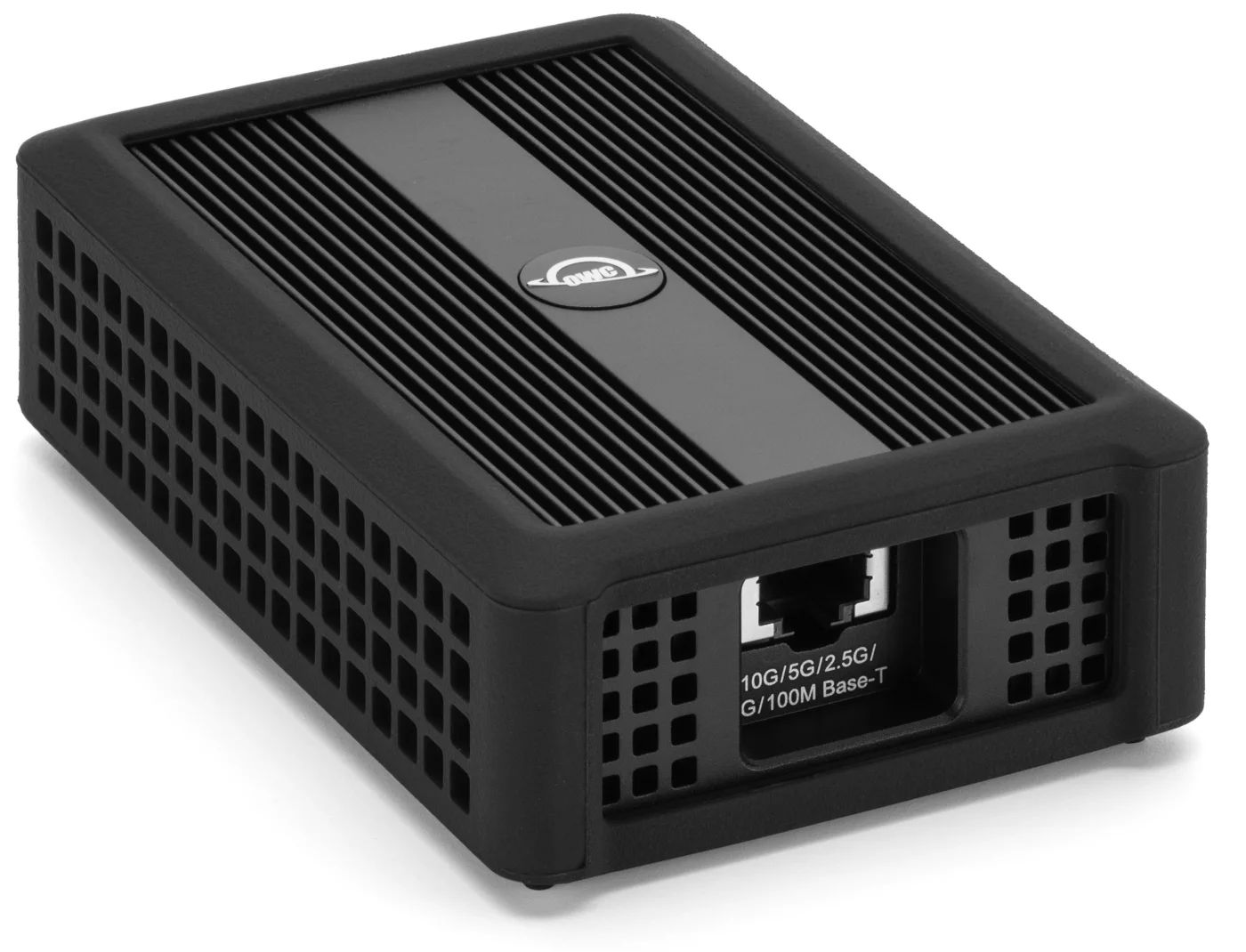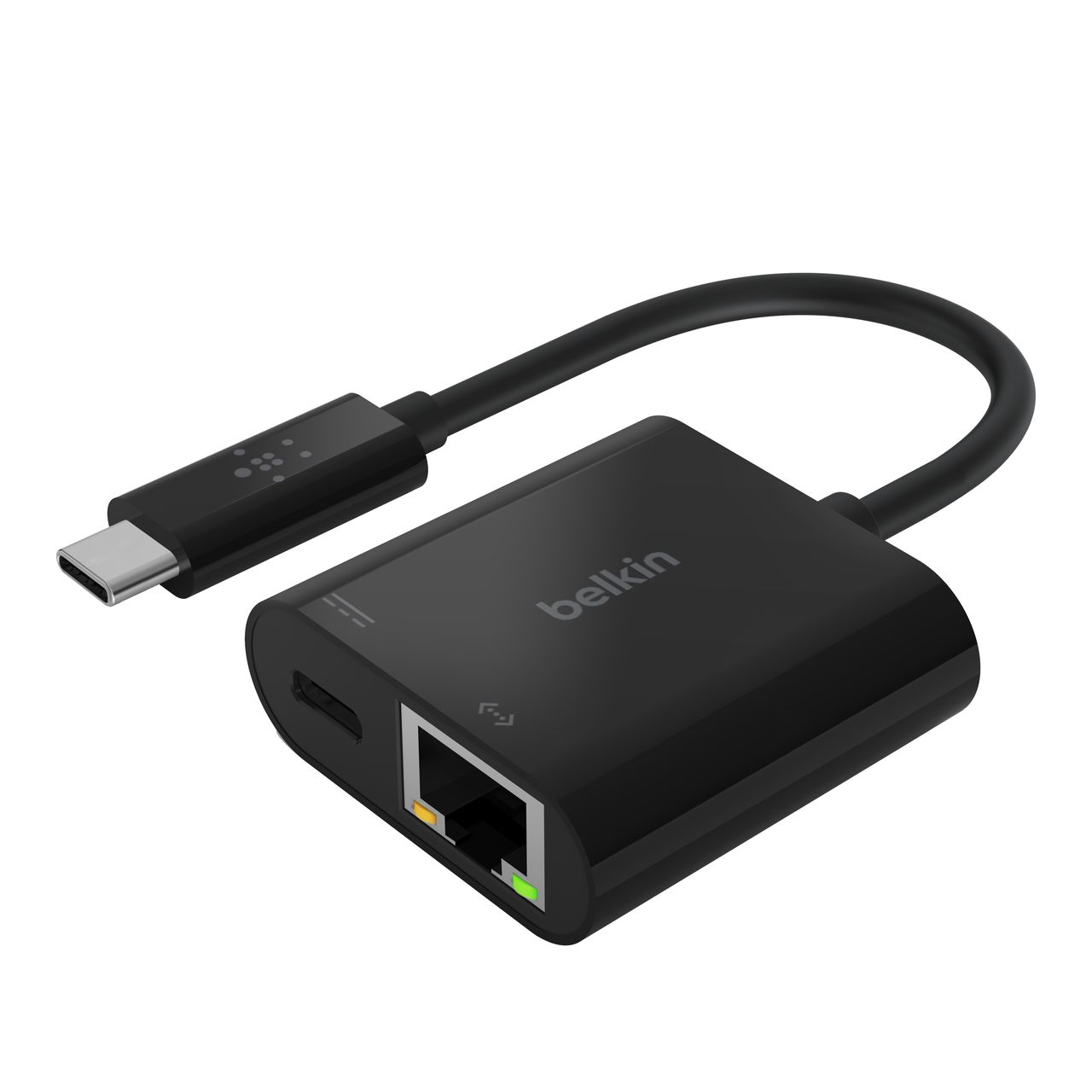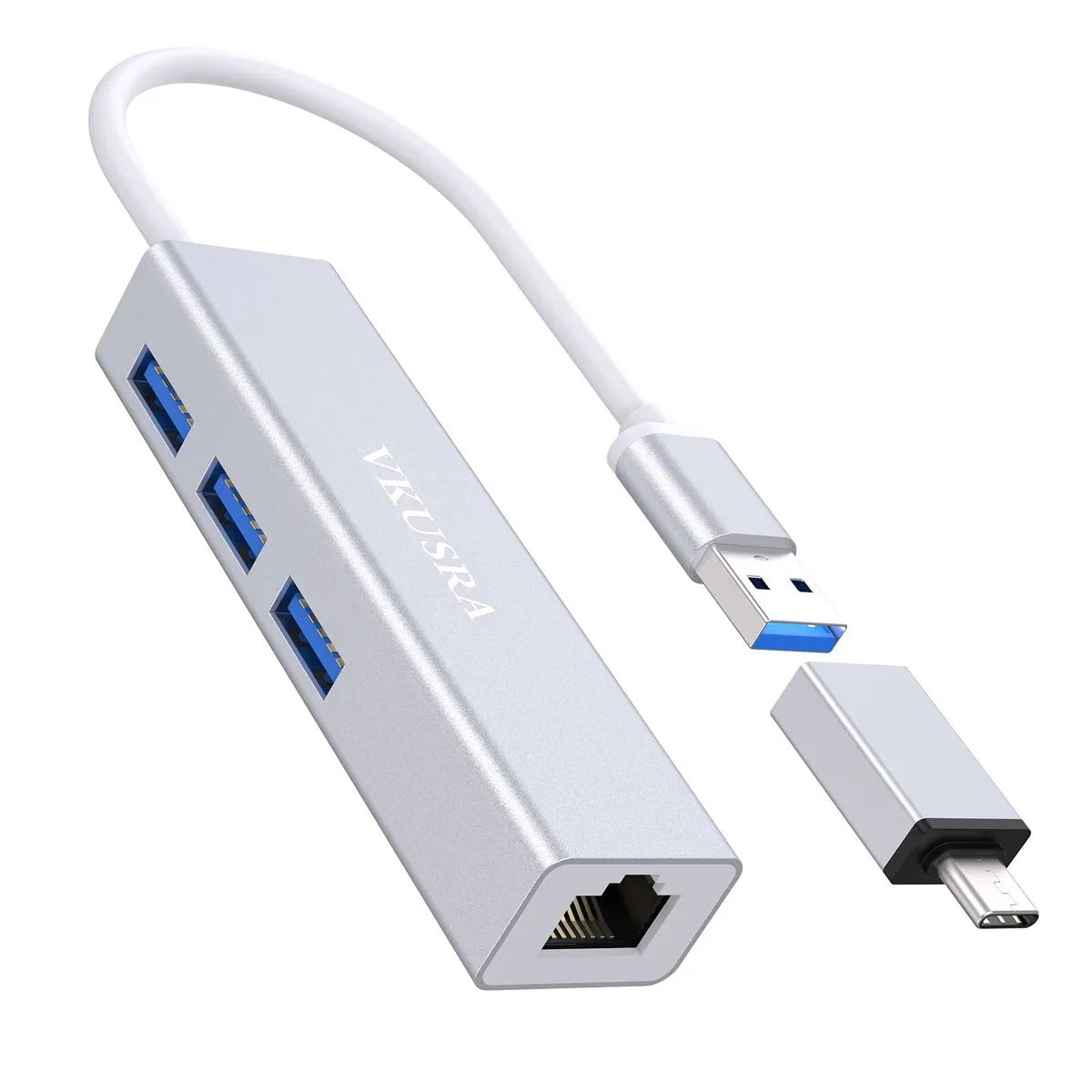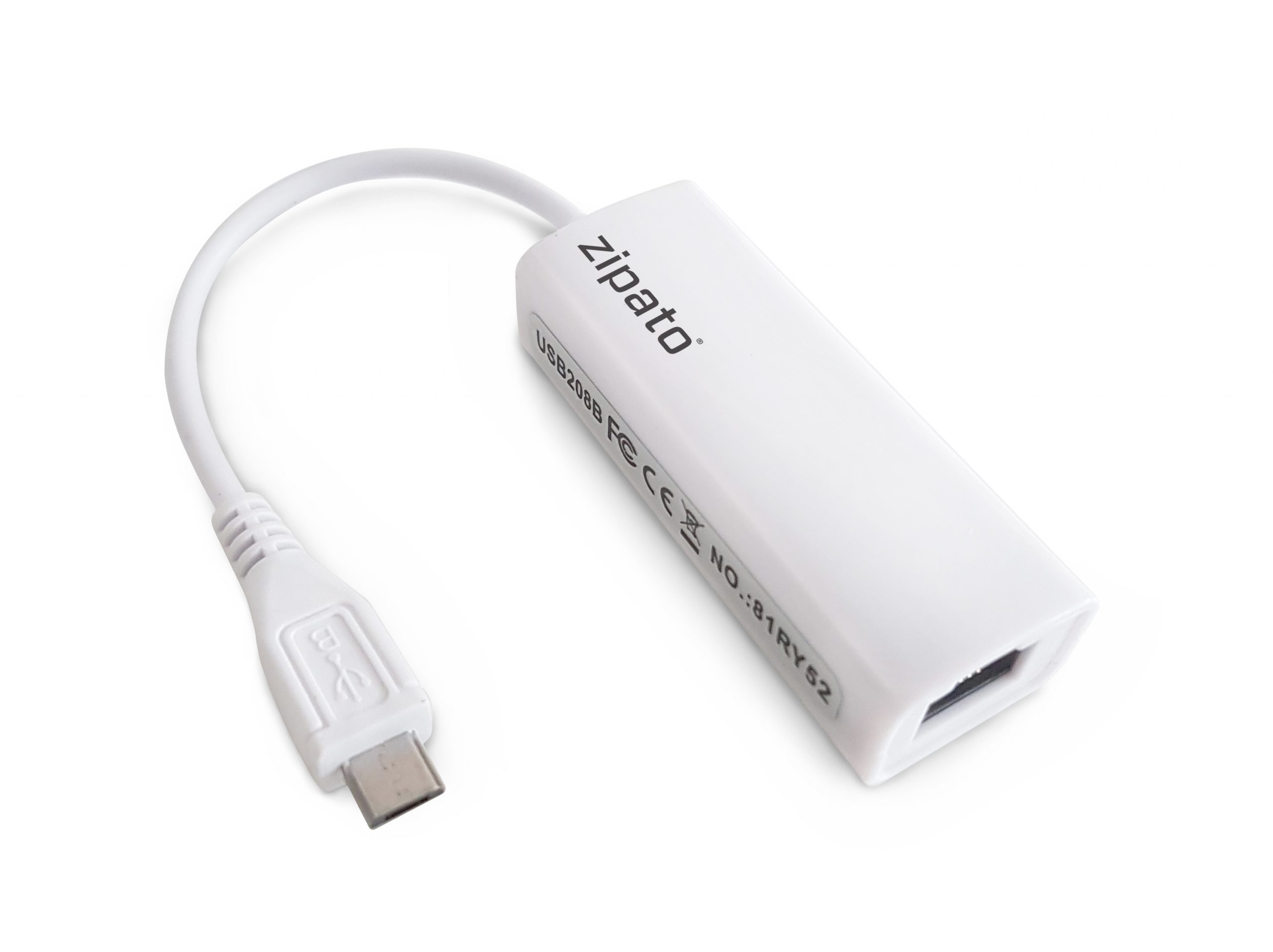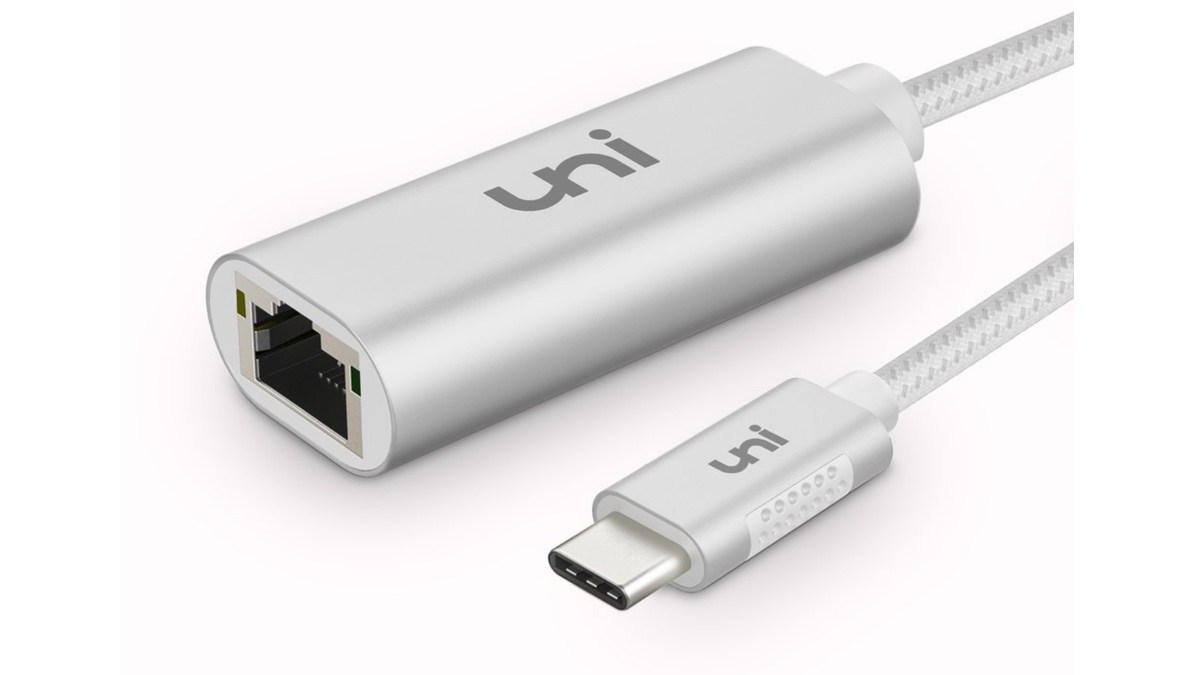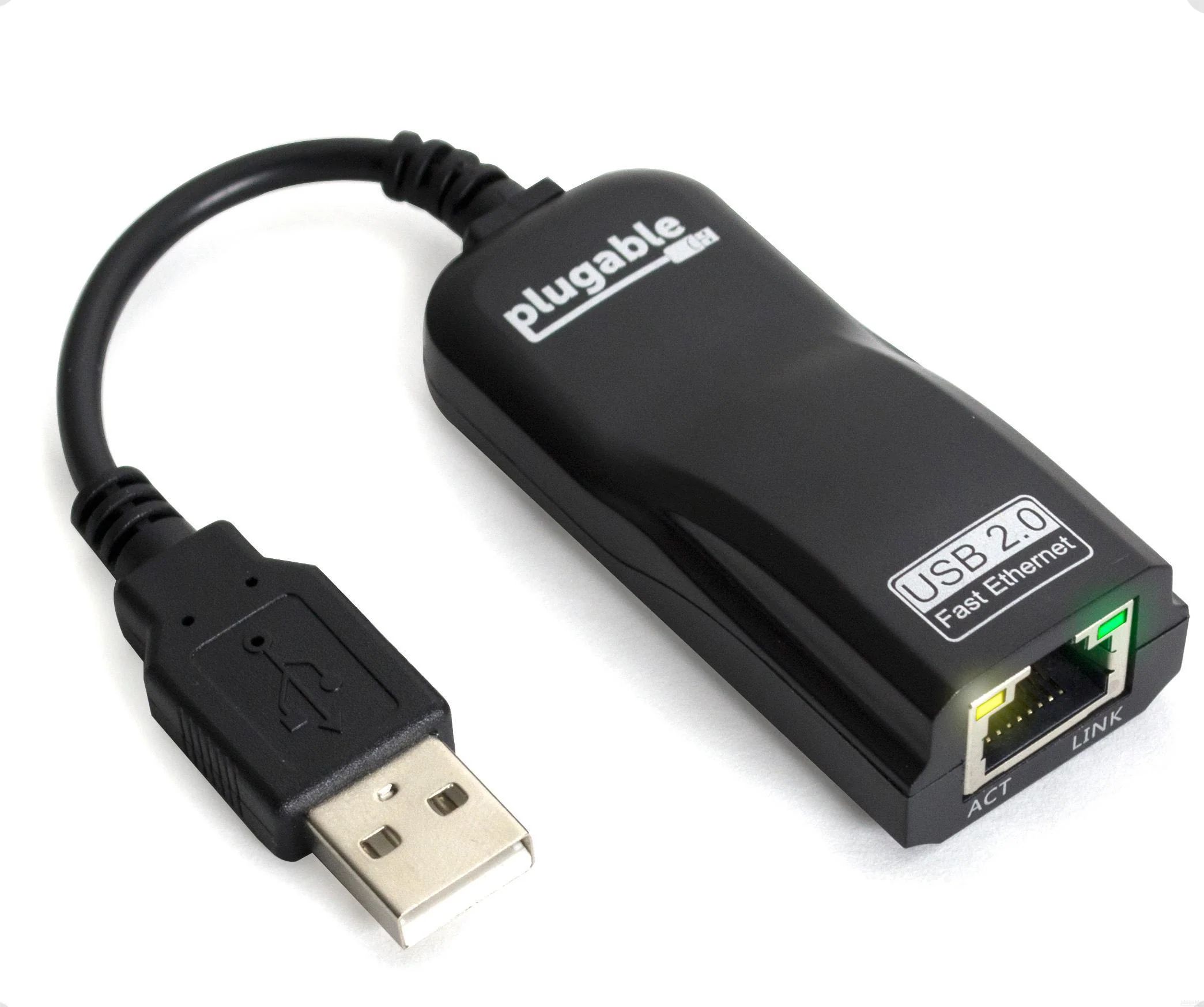Introduction
Are you frustrated with slow Ethernet speeds on your Windows 10 device? Don’t worry – you’re in the right place. In this article, we will explore a range of methods and settings to help you make your Ethernet connection faster and more efficient.
Having a fast and reliable Ethernet connection is crucial for a seamless online experience, especially when it comes to activities like gaming, streaming, or downloading large files. Slow speeds can be frustrating and may hinder your productivity. Fortunately, there are several steps you can take to optimize and improve the performance of your Ethernet connection on Windows 10.
In the following sections, we will walk you through various troubleshooting techniques and optimizations that can make a significant difference in your Ethernet speed. Whether you’re experiencing intermittent drops in connectivity or consistently slow speeds, these tips will help you diagnose and resolve the issue.
From checking your internet speed and examining your Ethernet cable to tweaking network adapter settings and disabling unnecessary background apps, we will cover a wide range of methods to maximize your network performance. By following these steps and implementing the appropriate changes, you’ll be well on your way to enjoying a lightning-fast Ethernet connection on your Windows 10 device.
So, let’s dive in and uncover the secrets to speeding up your Ethernet connection on Windows 10!
Check Your Internet Speed
Before diving into troubleshooting your Ethernet connection, it’s essential to determine your current internet speed. This will help you establish a benchmark and identify whether your connection is performing below its potential.
To check your internet speed, you can use online speed testing services such as Speedtest.net or Fast.com. Simply visit one of these websites and click the “Go” button to initiate the test. Within seconds, you’ll get results indicating your download and upload speeds, as well as your ping rate.
Once you have the speed test results, compare them to the speeds you are paying for with your internet service provider (ISP). If there is a significant difference between the two, it’s worth contacting your ISP to address the issue.
Additionally, it’s important to perform multiple speed tests at different times throughout the day. Internet speeds can fluctuate based on various factors such as network congestion and peak hours. By testing at different times, you can get a better understanding of whether the slow speeds are consistent or intermittent.
If the speed test results show that your internet connection is performing well, the issue may lie within your local network or settings. In this case, proceed with the following troubleshooting steps to optimize your Ethernet connection.
Keep in mind that variety of factors can affect your internet speed, including the type of internet connection you have (fiber, cable, DSL), your ISP, and the distance between your device and the router. It’s also essential to ensure that you are using a reliable and high-quality Ethernet cable, as a faulty or old cable can significantly impact your connection speed.
Now that you have determined your internet speed, let’s move on to the next step: checking your Ethernet cable.
Check Your Ethernet Cable
One of the first things to inspect when troubleshooting a slow Ethernet connection on Windows 10 is your Ethernet cable. A faulty or damaged cable can drastically affect your network speeds, so it’s crucial to ensure that your cable is in good condition.
Start by examining the cable for any visible signs of damage, such as fraying or bending. If you notice any damage, it’s best to replace the cable with a new one to guarantee optimal performance.
Next, make sure your Ethernet cable is securely connected to both your computer’s Ethernet port and the router or modem. A loose connection can create signal loss and result in slower speeds. Give the cable a gentle tug to confirm that it’s firmly plugged in on both ends.
If possible, try using a different Ethernet cable to see if there is any improvement in speed. This will help rule out the possibility of a faulty cable as the cause of the issue.
In addition to the physical condition of the cable, it’s important to consider the type of Ethernet cable you are using. Cat 5e and Cat 6 cables are capable of delivering higher speeds compared to older versions, such as Cat 5. If you’re using an older cable, upgrading to a Cat 5e or Cat 6 cable might improve your Ethernet performance.
Lastly, avoid running your Ethernet cable alongside power cables or other sources of electromagnetic interference. These can introduce signal interference, leading to slower speeds or unstable connections. Keep your Ethernet cable away from electrical wiring and ensure a clear path for the cable to minimize interference.
Once you have checked and potentially replaced your Ethernet cable, proceed to the next section to learn how to update your network adapter drivers.
Update Network Adapter Drivers
Outdated or incompatible network adapter drivers can significantly impact the performance of your Ethernet connection. It’s essential to keep your drivers up to date to ensure optimal compatibility and functionality.
To update your network adapter drivers on Windows 10, follow these steps:
- Press Windows key + X on your keyboard and select Device Manager from the menu.
- In the Device Manager window, expand the Network adapters category.
- Right-click on your Ethernet adapter and select Update driver.
- Choose the option to search automatically for updated driver software. Windows will then search online for the latest driver version and install it if available.
If Windows is unable to find an updated driver, you can visit the manufacturer’s website for your network adapter and download the latest driver directly from there. Make sure to choose the correct driver that matches your network adapter model and Windows 10 version.
After updating the driver, restart your computer to apply the changes. This can help in resolving any compatibility issues and ensure that your Ethernet connection is using the latest driver enhancements.
It’s also worth mentioning that some manufacturers provide their own utility software that can automatically detect and update drivers. If your network adapter’s manufacturer offers such a tool, consider using it to simplify the driver update process.
Updating your network adapter drivers can resolve common issues such as slow speeds, connection drops, and compatibility problems. However, if updating the drivers doesn’t improve your Ethernet speed, there are several other optimizations you can try, which we will explore in the following sections.
Next, we’ll discuss how to disable auto-tuning, a feature that can sometimes impact network performance.
Disable Auto-Tuning
Auto-Tuning is a feature in Windows 10 that can sometimes lead to slower network speeds. It allows the operating system to optimize the TCP/IP connection by dynamically adjusting the receive window size. However, in certain cases, Auto-Tuning can misinterpret network conditions and result in reduced performance.
To disable Auto-Tuning on Windows 10, follow these steps:
- Open a Command Prompt window with administrative privileges. You can do this by pressing Windows key + X on your keyboard and selecting Command Prompt (Admin) or Windows PowerShell (Admin) from the menu.
- In the Command Prompt window, type the following command and hit enter:
netsh interface tcp set global autotuninglevel=disabled
This command will disable Auto-Tuning for the network interface on your Windows 10 device.
After disabling Auto-Tuning, restart your computer to apply the changes. Once your system restarts, check if there is any improvement in your Ethernet speed.
If you experience issues or want to re-enable Auto-Tuning in the future, you can use the following command in an elevated Command Prompt window:
netsh interface tcp set global autotuninglevel=normal
Disabling Auto-Tuning can help resolve issues related to slow network speeds, latency, and network congestion. However, if you’re still experiencing slow Ethernet speeds, continue to the next section to learn about changing network adapter power management settings.
Change Network Adapter Power Management Settings
The power management settings of your network adapter can affect its performance and can sometimes lead to slower Ethernet speeds. By adjusting these settings, you can optimize your network adapter for maximum performance.
Follow these steps to change the power management settings of your network adapter:
- Press Windows key + X on your keyboard and select Device Manager from the menu.
- In the Device Manager window, expand the Network adapters category.
- Right-click on your Ethernet adapter and select Properties.
- In the Properties window, navigate to the Power Management tab.
- Uncheck the option that says Allow the computer to turn off this device to save power.
- Click OK to apply the changes.
Disabling the power-saving feature ensures that your network adapter maintains a consistent connection and performance, even during periods of inactivity.
After making these changes, restart your computer to apply the new power management settings. Once your computer has restarted, check if there is any improvement in your Ethernet speeds.
Changing the power management settings of your network adapter can help resolve issues related to slow speeds and connection drops. However, if you’re still experiencing slow Ethernet speeds, continue to the next section to learn about disabling Large Send Offload (LSO).
Disable Large Send Offload (LSO)
Large Send Offload (LSO) is a feature that allows a network adapter to offload the task of segmenting large packets into smaller ones to the processor. While this feature can improve overall network performance, it can sometimes cause issues with specific network configurations and result in slower Ethernet speeds.
To disable Large Send Offload on your Windows 10 device, follow these steps:
- Press Windows key + X on your keyboard and select Device Manager from the menu.
- In the Device Manager window, expand the Network adapters category.
- Right-click on your Ethernet adapter and select Properties.
- In the Properties window, navigate to the Advanced tab.
- Look for an option called Large Send Offload or something similar. The exact name may vary depending on your network adapter.
- Select the option and choose Disabled from the drop-down menu.
- Click OK to save the changes.
Disabling Large Send Offload can alleviate issues related to slower Ethernet speeds and connectivity problems. After making this change, it’s recommended to restart your computer to apply the new settings.
If you’re still experiencing slow Ethernet speeds, continue to the next section where we will discuss disabling Interrupt Moderation, another potential optimization technique.
Disable Interrupt Moderation
Interrupt Moderation is a feature in Windows 10 that can sometimes introduce latency and impact network performance. This feature aims to reduce the amount of interrupt processing by moderating the rate at which interrupts are generated by the network adapter.
While Interrupt Moderation can be beneficial in certain scenarios, it can also cause slower Ethernet speeds in some cases. Disabling this feature may help improve network performance on your Windows 10 device.
To disable Interrupt Moderation, follow these steps:
- Press Windows key + X on your keyboard and select Device Manager from the menu.
- In the Device Manager window, expand the Network adapters category.
- Right-click on your Ethernet adapter and select Properties.
- In the Properties window, navigate to the Advanced tab.
- Look for an option called Interrupt Moderation or something similar. The exact name may vary depending on your network adapter.
- Select the option and choose Disabled from the drop-down menu.
- Click OK to save the changes.
Disabling Interrupt Moderation can enhance network performance and reduce latency issues. However, keep in mind that the impact of disabling this feature may vary depending on your specific network configuration and hardware setup.
Once you have disabled Interrupt Moderation, restart your computer to apply the changes. After the restart, check if there is any improvement in your Ethernet speeds.
If you’re still experiencing slow Ethernet speeds, continue to the next section where we will discuss disabling Energy Efficient Ethernet.
Disable Energy Efficient Ethernet
Energy Efficient Ethernet (EEE) is a feature designed to reduce power consumption by dynamically adjusting the power usage of your network adapter based on network activity. While this feature can be beneficial for energy savings, it can sometimes result in slower Ethernet speeds or intermittent connectivity issues.
To disable Energy Efficient Ethernet on your Windows 10 device, follow these steps:
- Press Windows key + X on your keyboard and select Device Manager from the menu.
- In the Device Manager window, expand the Network adapters category.
- Right-click on your Ethernet adapter and select Properties.
- In the Properties window, navigate to the Advanced tab.
- Look for an option called Energy Efficient Ethernet, EEE, or something similar. The exact name may vary depending on your network adapter.
- Select the option and choose Disabled from the drop-down menu.
- Click OK to save the changes.
By disabling Energy Efficient Ethernet, you ensure that your network adapter operates at maximum performance without compromising power efficiency. After making this change, it’s recommended to restart your computer to apply the new settings.
If you’re still experiencing slow Ethernet speeds, continue to the next section where we will discuss disabling Windows Update Delivery Optimization.
Disable Windows Update Delivery Optimization
Windows Update Delivery Optimization is a feature in Windows 10 that allows your computer to download updates and apps from other devices on your local network or the internet. While this feature can be useful for faster updates, it can also consume bandwidth and impact your Ethernet speeds.
If you’re experiencing slow Ethernet speeds, disabling Windows Update Delivery Optimization may help. Here’s how to do it:
- Go to the Start menu and click on the Settings (gear) icon.
- In the Settings window, select Update & Security.
- In the left-hand menu, click on Windows Update.
- Click on Advanced options.
- Under the Delivery Optimization section, click on Delivery Optimization (or Advanced options).
- Toggle the Allow downloads from other PCs option to Off.
Disabling this feature ensures that your computer only downloads updates and apps directly from Microsoft servers, potentially improving your Ethernet speeds.
Keep in mind that disabling Windows Update Delivery Optimization means your computer won’t contribute to the network to help other devices update. If you’re on a limited bandwidth connection, it’s recommended to disable this feature.
After making this change, restart your computer to apply the new settings.
If you’re still experiencing slow Ethernet speeds, continue to the next section where we will discuss disabling background apps.
Disable Background Apps
Background apps running on Windows 10 can sometimes consume network resources and impact Ethernet speeds. Disabling unnecessary background apps can help optimize your network performance and improve overall speeds.
To disable background apps on Windows 10, follow these steps:
- Go to the Start menu and select Settings (gear icon).
- In the Settings window, click on Privacy.
- In the left-hand menu, click on Background apps.
- In the Background apps settings, toggle off the switch for the apps you want to disable.
Review the list of background apps that are currently enabled and consider disabling any that you don’t need running in the background. This will reduce network usage and potentially improve your Ethernet speeds.
Remember that some background apps are essential for the smooth operation of certain features or services on Windows 10. Use your discretion and only disable the ones that are not critical to your workflow or needs.
After disabling the unnecessary background apps, restart your computer for the changes to take effect.
If you’re still experiencing slow Ethernet speeds, continue to the next section where we will discuss resetting the TCP/IP stack.
Reset TCP/IP Stack
The TCP/IP stack is a set of protocols that enables communication over the internet. If your Ethernet connection is experiencing issues or slow speeds, resetting the TCP/IP stack can help resolve network-related problems.
To reset the TCP/IP stack on Windows 10, follow these steps:
- Open a Command Prompt window with administrative privileges. You can do this by pressing Windows key + X on your keyboard and selecting Command Prompt (Admin) or Windows PowerShell (Admin) from the menu.
- In the Command Prompt window, type the following command and press enter:
netsh int ip reset - Wait for the command to complete its execution.
- Once the command is finished, restart your computer.
This process will reset the TCP/IP stack to its default settings, which can help fix network configuration issues and improve Ethernet speeds.
After your computer restarts, check if the Ethernet speeds have improved. If the issue persists, proceed to the next section where we will discuss changing DNS servers as a potential solution.
Change DNS Servers
Domain Name System (DNS) servers translate web addresses into IP addresses that computers can understand. Sometimes, using default DNS servers provided by your internet service provider (ISP) can result in slower response times or unreliable connections. By changing to faster and more reliable DNS servers, you can potentially improve your Ethernet speeds.
To change DNS servers on Windows 10, follow these steps:
- Go to the Start menu and select Settings (gear icon).
- In the Settings window, click on Network & Internet.
- In the left-hand menu, choose Ethernet (or Wi-Fi if you are using a wireless connection).
- Under Related settings, click on Change adapter options.
- Right-click on your active Ethernet connection and select Properties.
- In the Ethernet Properties window, scroll down and locate Internet Protocol Version (TCP/IPv4).
- Select it and click on Properties.
- In the Internet Protocol Version 4 Properties window, select Use the following DNS server addresses.
- Enter the IP addresses of the desired DNS servers. Popular options include Google Public DNS (8.8.8.8 and 8.8.4.4) or Cloudflare DNS (1.1.1.1 and 1.0.0.1).
- Click OK to save the changes.
Changing DNS servers can potentially result in faster and more reliable responses when accessing websites and services online. After making this change, it’s recommended to restart your computer for the new DNS settings to take effect.
If you’re still experiencing slow Ethernet speeds, continue to the next section where we will discuss disabling the Windows Firewall.
Disable Windows Firewall
Windows Firewall is a built-in security feature in Windows 10 that monitors and filters network traffic. While it plays a crucial role in protecting your system from unauthorized access, it can sometimes interfere with network connections and result in slower Ethernet speeds. Disabling Windows Firewall temporarily can help identify if it’s causing any network-related issues.
To disable Windows Firewall on Windows 10, follow these steps:
- Go to the Start menu and click on the Settings (gear icon).
- In the Settings window, select Update & Security.
- In the left-hand menu, click on Windows Security.
- In the Windows Security window, click on Firewall & network protection.
- Under the Firewall & network protection section, click on the currently active network profile (e.g., Domain network, Private network, or Public network).
- Toggle the Windows Defender Firewall switch to Off.
Note that disabling Windows Firewall will leave your computer more vulnerable to unauthorized network access. It’s crucial to re-enable it once you have identified whether it was causing the slow Ethernet speeds or not.
After disabling Windows Firewall, test your Ethernet speeds to determine if it has made any improvement. If the slow speeds persist, proceed to the next section where we will discuss disabling proxy settings.
Disable Proxy Settings
Proxy settings on Windows 10 can redirect your network traffic through a server, which can sometimes introduce latency and impact Ethernet speeds. Disabling proxy settings can help ensure a direct connection, potentially improving the performance of your network connection.
To disable proxy settings on Windows 10, follow these steps:
- Go to the Start menu and click on the Settings (gear icon).
- In the Settings window, select Network & Internet.
- In the left-hand menu, choose Proxy.
- In the right-hand menu, under the Manual proxy setup section, toggle off the switch that says Use a proxy server.
Disabling proxy settings ensures that your computer communicates directly with websites and services, without routing through an intermediate server.
After disabling proxy settings, restart your computer to apply the changes. Upon rebooting, check if your Ethernet speeds have improved. If the issue persists, proceed to the next section where we will discuss restarting your router and modem.
Restart Your Router and Modem
If you’ve tried all the previous troubleshooting methods and are still experiencing slow Ethernet speeds, restarting your router and modem can often help resolve connectivity issues and improve network performance.
Here’s how you can restart your router and modem:
- Locate your router and modem.
- Unplug the power cables from both devices. If your modem has a battery backup, remove the battery as well.
- Wait for about 30 seconds to a minute.
- Plug the power cable back into the modem and wait for it to fully boot up. If you removed the battery, insert it back and secure it in place.
- Once the modem is online and stable, plug the power cable back into the router and wait for it to fully boot up.
Restarting your router and modem can help clear any temporary network glitches and refresh the connection with your Internet Service Provider (ISP).
After the router and modem have restarted and reestablished a connection, check your Ethernet speeds to see if they have improved.
If you’re still experiencing slow speeds, it may be worth contacting your ISP for further assistance or troubleshooting. They can help diagnose any potential issues with your internet connection beyond your local network.
By following the steps in this guide, you’ve explored various methods to optimize your Ethernet speeds on Windows 10. Hopefully, you have experienced an improvement in performance and can now enjoy faster and more reliable network connectivity.
Conclusion
Having a fast and reliable Ethernet connection is essential for a smooth online experience on your Windows 10 device. Slow speeds can be frustrating and impact your productivity, especially when it comes to activities like streaming, gaming, or downloading large files.
In this article, we have explored various methods to optimize and improve your Ethernet speeds on Windows 10. From checking your internet speed and examining your Ethernet cable to updating network adapter drivers and disabling unnecessary settings, such as Auto-Tuning and Energy Efficient Ethernet, we have covered a range of troubleshooting techniques.
Additionally, we discussed the importance of adjusting power management settings, disabling background apps, resetting the TCP/IP stack, changing DNS servers, and even restarting your router and modem. Each of these steps plays a role in maximizing network performance and addressing potential bottlenecks that may be slowing down your Ethernet connection.
Remember that it’s important to strike a balance between implementing these optimizations and maintaining the security and stability of your system. For instance, while disabling Windows Firewall or proxy settings may help troubleshooting, it’s crucial to re-enable them once you have identified the cause of the slow speeds.
If you have followed these steps and are still experiencing slow Ethernet speeds, it’s a good idea to consult with your Internet Service Provider (ISP). They can help diagnose any issues with your internet connection beyond your local network and provide further assistance with troubleshooting.
By taking the time to optimize your Ethernet connection using the methods outlined in this article, you can enjoy faster and more reliable speeds, allowing you to make the most out of your online activities on your Windows 10 device.







